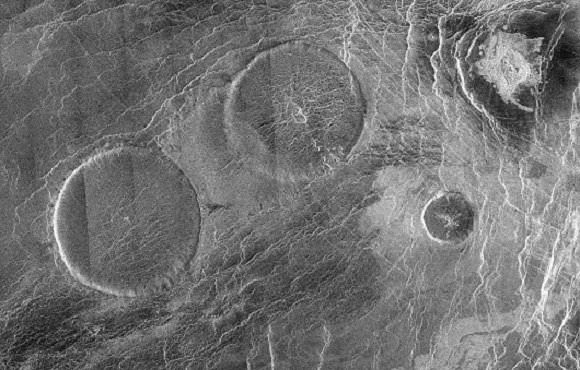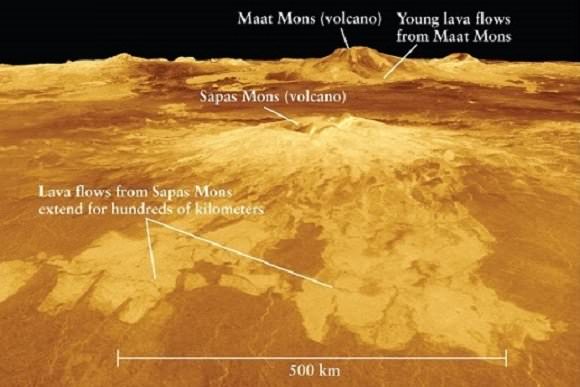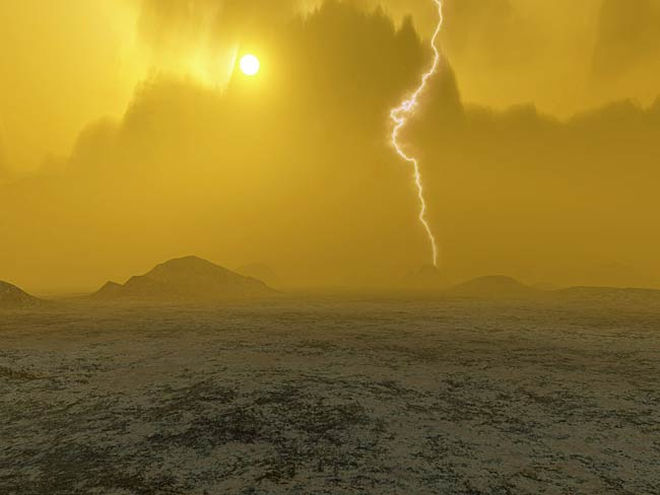The surface of Venus has been a mystery to scientists ever since the Space Age began. Thanks to its dense atmosphere, its surface is inaccessible to direct observations. In terms of exploration, the only missions to penetrate the atmosphere or reach the surface were only able to transmit data back for a matter of hours. And what we have managed to learn over the years has served to deepen its mysteries as well.
For instance, for years, scientists have been aware of the fact that Venus experiences volcanic activity similar to Earth (as evidenced by lighting storms in its atmosphere), but very few volcanoes have been detected on its surface. But thanks to a new study from the School of Earth and Environmental Sciences (SEES) at the University of St. Andrews, we may be ready to put that particular mystery to bed.
The study was conducted by Dr. Sami Mikhail, a lecturer with the SEES, with the assistance of researchers from the University of Strasbourg. In examining Venus’ geological past, Mikhail and his colleagues sought to understand how it is that the most Earth-like planet in our Solar System could be considerably less geologically-active than Earth. According to their findings, the answer lies in the nature of Venus’ crust, which has a much higher plasticity.

This is due to the intense heat on Venus’ surface, which averages at 737 K (462 °C; 864 °F) with very little variation between day and night or over the course of a year. Given that this heat is enough to melt lead, it has the effect of keeping Venus’ silicate crust in a softened and semi-viscous state. This prevents lava magmas from being able to move through cracks in the planets’ crust and form volcanoes (as they do on Earth).
In fact, since the crust is not particularly solid, cracks are unable to form in the crust at all, which causes magma to get stuck in the soft, malleable crust. This is also what prevents Venus from experiencing tectonic activity similar to what Earth experiences, where plates drift across the surface and collide, occasionally forcing magma up through vents. This cycle, it should be noted, is crucial to Earth’s carbon cycle and plays a vital role in Earth’s climate.
Not only do these findings explain one of the larger mysteries about Venus’ geological past, but they also are an important step towards differentiating between Earth and it’s “sister planet”. The implications of this goes far beyond the Solar System. As Dr. Mikhail said in a St. Andrews University press release:
“If we can understand how and why two, almost identical, planets became so very different, then we as geologists, can inform astronomers how humanity could find other habitable Earth-like planets, and avoid uninhabitable Earth-like planets that turn out to be more Venus-like which is a barren, hot, and hellish wasteland.”

In terms of size, composition, structure, chemistry, and its position within the Solar System (i.e. within the Sun’s habitable zone), Venus is the most-Earth like planet discovered to date. And yet, the fact that it is slightly closer to our Sun has resulted in it having a vastly different atmosphere and geological history. And these differences are what make it the hellish, uninhabitable place that is today.
Beyond our Solar System, astronomers have discovered thousands of exoplanets orbiting various types of stars. In some cases, where the planets exist close to their sun and are in possession of an atmosphere, the planets have been designated as being “Venus-like“. This naturally sets them apart from the planets that are of particular interest to exoplanet hunters – i.e. the “Earth-like” ones.
Knowing how and why these two very similar planets can differ so dramatically in terms of their geological and environmental conditions is therefore key to being able to tell the difference between planets that are conducive to life and hostile to life. That can only come in handy when we begin to study multiple-planet systems (such as the seven-planet system of TRAPPIST-1) more closely.
Further Reading: University of St. Andrews

